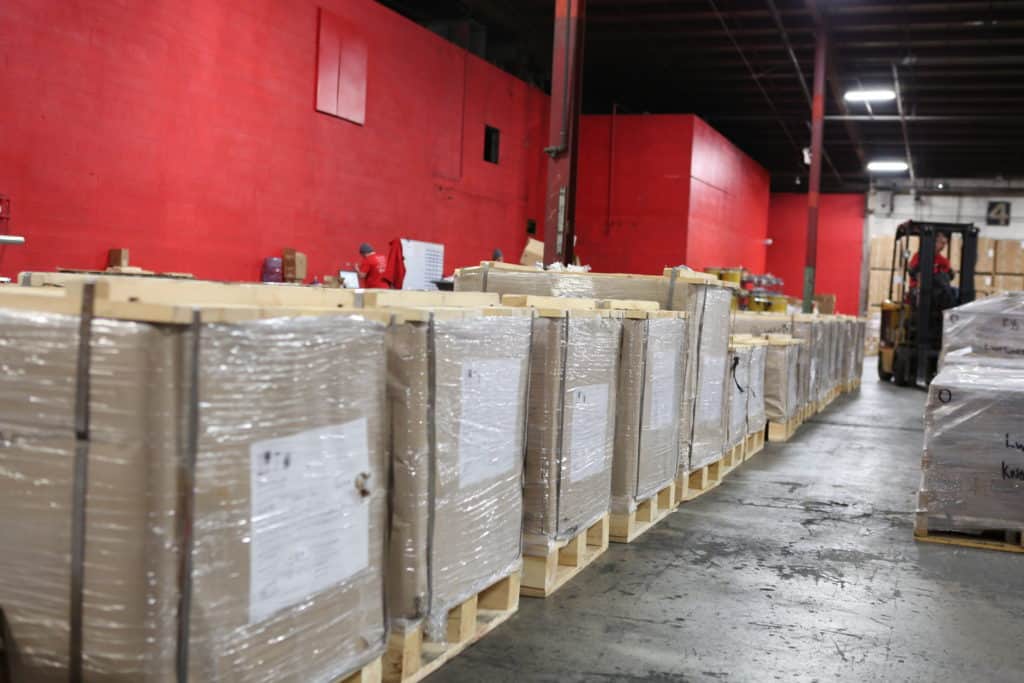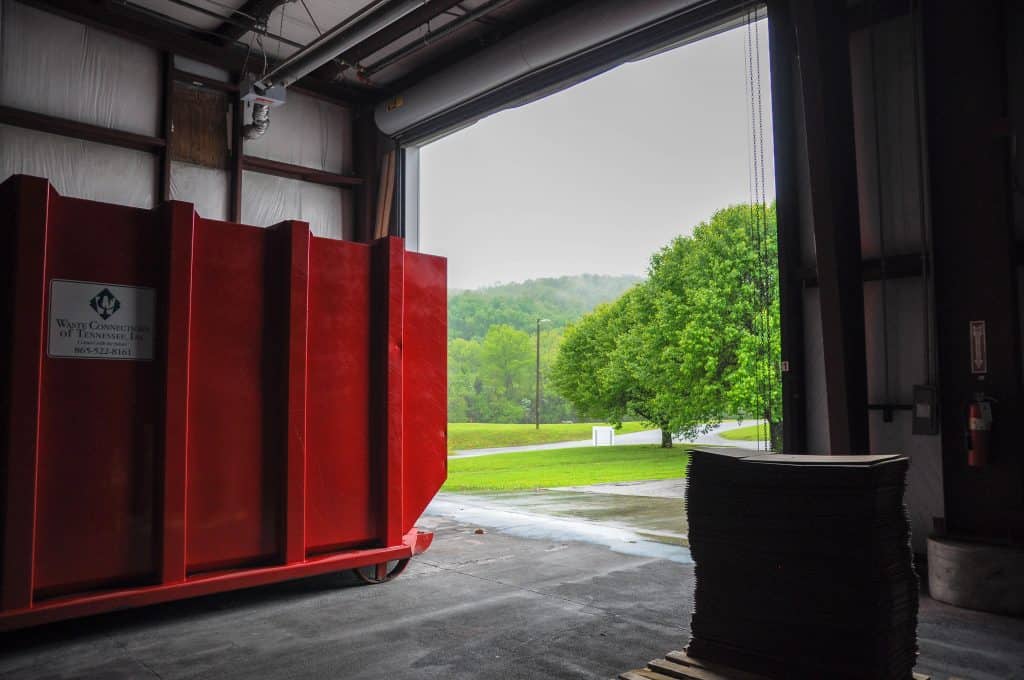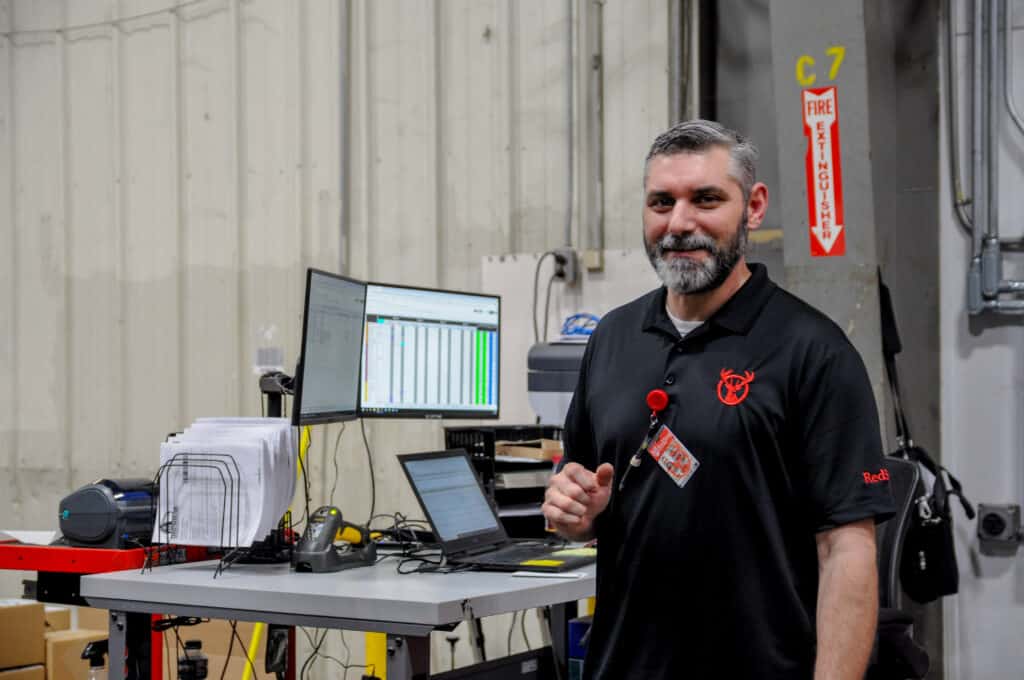Supply chains and eCommerce companies have a wealth of information about every aspect of their business, and turning to data-driven insights can help you leverage it for great success. That’s a significant promise, but it can be hard to understand what that means in real terms for daily operations.
In this post, we’ll look at what precisely data-driven insights can include. Plus, we’ll discuss a few areas where your company likely has enough information to start performing analysis and optimizing processes. It’s the first step for many eCommerce companies to achieve robust order management. However, there are also benefits for intelligent inventory allocation and more reliable fulfillment that leads to happier customers.

Data-driven insights defined
As we talk about information and analytics, we first need to tackle a significant question: What are data-driven insights?
Data-driven insights include the patterns, trends, and lessons you uncover when applying different types of statistical analysis to your operations. Then, this information is used to inform business decisions and take specific actions. They can be incredibly complex. For example, think of adapting to new manufacturing demands or changing how you inbound to your warehouse. On the other hand, insights can also be simple. Many warehouse management tools help optimize product locations to make picking orders faster.
For our supply chain discussion, there’s a lot of data. You want to have historical information about past sales and restocking orders. To start, track current inventory levels, carrier partners and capabilities, warehouse layout, individual SKU information, and more. Try to link the systems that track this information. Integration simplifies processes to analyze that data and build out insights and understandings that reflect your entire operations.
Ultimately, you start making decisions based on the facts of your business instead of guesswork or assumptions. It’ll mitigate risks and may even uncover patterns no one has seen before. These help companies like yours optimize how you spend capital and serve customers.

Order and inventory analysis
One of the first places to apply data-driven insights for logistics operations is analyzing current orders and inventory. You want to generate an understanding of your inventory performance. That covers how quickly you turn it over, the levels you maintain, and how you prep it for your consumers.
Whether you work with Red Stag Fulfillment or run your own analytics, focus on inventory data first. Combine your current inventory levels, existing orders, past sales, and your revenue for each SKU. Getting firm numbers for these metrics helps you see your best performers and most valuable sales items. As a result, you may realize you’re holding too much stock for slow sellers. Or, you may discover that you’ve got enough sales volume to start buying in bulk. That’ll generate potential savings from your manufacturer or supplier.
Try this blog to learn more about the inventory turnover and cost of goods sold metrics
You can look for further insights as you master baseline inventory understanding and analysis. Look at your best-performing inventory and space available to customers to see if you can add a similar or related product with high demand. For example, skis are a perfect fit for a warehouse in Utah if you sell sports equipment. Why not add thermal phone cases to this warehouse and sell them alongside skis to help your fans keep their phones warm, maintain the batter for longer, and limit the risk of snow damage?
Is your East Coast audience more into hitting the trails on four wheels? In this case, rugged phone cases are likely a better fit. You can offer both on your site, but inventory and order analysis would offer some data-driven insights on how to allocate inventory best based on past orders.

Data-driven insights for inbound
One chief priority for the businesses we help is the optimization of their inbound freight. As we grow our distribution and fulfillment center network, we’re creating more places for inventory to live. Thankfully, that doesn’t have to create more work for you or your team.
By analyzing your customer orders and existing supply chain, we can help your business send the right amount of inbound freight and products to the best fulfillment location. Moving our network closer to large ports and consumer hubs gives you shorter distances to travel for inbound logistics, saving you money on the move. Matching inventory levels to current regional demand helps you avoid needing to shift inventory while further saving by positioning goods closer to your customers.
Inbound optimization works to cut your costs while ensuring there are redundancies to protect your business. Natural disasters, infrastructure problems, and carrier labor shortages can impact locations around the U.S. Red Stag Fulfillment offers an extensive network to help you avoid congestion and concerns, preventing delays and helping you fill orders on time.
And when it comes to supply-level decisions, you can turn to the same inbound analytics for data-driven insights around resupply, allocation, and when you need to scale your operations up or down. Scaling leads us directly into another area where data can help.

Demand forecasting
Demand forecasting uses inventory and order analytics to help you make predictions about the sales you’ll see in the future. Predicting the demand of sales impacts how you stock goods, making it easier to avoid stockouts as well as overstocking products. As a result, you can better utilize your capital on leading inventory or eCommerce store improvements.
Red Stag Fulfillment helps companies track their sales, order, and inventory-level data to make demand forecasting easier. We can also assist with the analytics themselves to provide the information you need to build your own data-driven insights. The ultimate goal is to have the goods you need to fill orders and maintain safety stock without spending too much on products experiencing a slowdown.
Demand forecasting should look at regional and seasonal demand as well as longer historical trends. This view helps you plan for your busy- and off-seasons while adjusting overall inventory levels up or down to match long-term sales projections.
Red Stag Fulfillment is also a strong proponent of demand forecasting because it makes restocking easier. When you know to expect a surge in demand, you can reach out to manufacturers and suppliers sooner. That way, you have more lead time to increase stock levels and meet demand as soon as the spike arrives.
With the carrier disruptions seen in 2020, demand forecasting can help you plan and create enough additional time to ensure you’ve got stock ready for customer growth.
Learn more about different demand forecasting types and methods here.
Improved order fulfillment
A final area to look at for data-driven insights is your order fulfillment. Today, eCommerce businesses are always trying to find a way to offer reliable (and sometimes free) two-day shipping after an order is processed. Customers, however, tend to read that as two-day delivery after they place an order. So, you’ve got to be fast to meet that demand.
Order analytics is one tool to optimize your speed, starting with their allocation in your network. If you operate regional locations or partner with a 3PL like Red Stag Fulfillment, you have multiple options to fill an order. Your order management tools should automate order routing to the closest fulfillment location to the customer, minimizing the time for delivery and your shipping costs. Analytics is an intelligent backup here to verify that these moves are correct.
One location may be closer as the crow flies. But, if there is no interstate connection or if packages first travel to a carrier sorting facility in the other direction, your other location can prove to be on time more reliably.
Pair these decisions with the data-driven insights on inventory mentioned above, and you can help ensure you’ve got the proper inventory allocation to fill orders fast.
Red Stag Fulfillment also applies analytics to our inventory storage locations. This supports quick order fulfillment by minimizing the chance of a mis-pick and helping pickers move faster throughout the warehouse. We do, and you can, optimize bin locations and even packing stations to keep orders moving quickly.

Data-driven insights in practice
Data and analytics often come with big promises from software vendors. They like to present it as clicking a button will instantly revolutionize your business. Unfortunately, that’s usually not the case. So, while analytics help you create data-driven insights and suggestions, you need an expert to turn those into smarter business decisions.
You’ve got to take the next step to put it in place and continually adjust those decisions to ensure you’re getting it right.
When it comes to fulfillment, that’s what Red Stag does every day. We’re continually reviewing our practices, locations, teams, and partners to promote optimization and risk mitigation. Thanks to some great people, we usually get it right. That’s what allows us to make multiple guarantees around inventory accuracy and receiving, plus order processing and accurate fulfillment.











